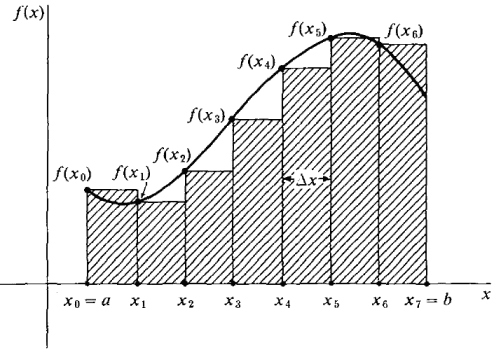
When thinking about just about anything that lies on a dimension, it is natural for me to play a little game and imagine what lies at the poles. Personality traits are often thought of as dimensions. It’s advantageous to imagine the manifestations of the ‘most,’ or the ‘least’ of some particular trait, because those images become prototypes, and all that lies between them are transformations.
When I encountered the trait self-complexity, I automatically played my little game. What would someone be like who had infinite self-complexity? It’s impossible, we might say. However, in doing calculus it is. For example, we can examine the equation y = 1\x as x approaches infinity, but we cannot look at the end-point, because it isn’t real. (neither is the point where x approaches 0). If we do the calculus for self-complexity, we find someone(s) who have identities wrapped up in increasingly higher numbers of aspects. Such persons would, by the extrapolations of evidence given in the textbook, be very resistant to stress, at least those caused by perceived social impacts, (Not those stressors that harm the body). Furthermore, such persons would be less prone to mood swings, and particular positive or negative information about them would have less of an impact on their perceived self.
It’s a fun game to play to imagine such a person, or to imagine achieving such a state. I am not sure that many people would trade the mix of happy and sad moods for a more gentle ride. It’s not even possible, is it? It would be a ridiculous enterprise to describe oneself via a humongously intricate personality profile, a task demanding enough to be exhausting on a day-to-day basis. But if we look at the calculus, we see that as the number of personality aspects increases, assuming the there is a finite amount of information to describe, those aspects get more and more specific. And, as the number of aspects approaches infinity, the specificity, or the size of the aspect approaches 0.
There are a number of ways to increase the specificity of our self-descriptions, across dimensions, or within time. If we look at time as our variable (let x be time), then the second last hypothetical individual (lets call him infinite self-complexity minus 1), would be defining themselves moment to moment, and I imagine they would be very frustrated with the whole task. What would the next person do? The last hypothetical person, the one with infinite self-complexity, would just stop defining themselves entirely. Of course this person would appear similar to someone with 0 self-complexity. The head of the process would swing right around and bite itself in the tail. Didn’t someone say, that true knowing, is knowing that you know nothing?
 Interestingly there is another form of calculus that allows us to find the area of non-rectangular items. Imagine a curve on an x-y plot. We can find an estimate of the area of that irregular shape by inserting and adding up the area of a number of rectangles. However it’s an estimate because of the overlaps, and the the missing bits. But we can decrease the overlap and the missing bits by increasing the number of rectangles. The true area would be what we would find inserting an infinite number of rectangles. Of course we can’t do that, but we can find the limit to the area as we approach infinity, which gives us a pretty good answer. This might form a good analogy for increasing self-complexity across dimensions. We can see ourselves more accuratly, if we look at increasingly numerous numbers of concepts, but we lose power to grasp that concept as it gets more and more specific, and less observable.
Interestingly there is another form of calculus that allows us to find the area of non-rectangular items. Imagine a curve on an x-y plot. We can find an estimate of the area of that irregular shape by inserting and adding up the area of a number of rectangles. However it’s an estimate because of the overlaps, and the the missing bits. But we can decrease the overlap and the missing bits by increasing the number of rectangles. The true area would be what we would find inserting an infinite number of rectangles. Of course we can’t do that, but we can find the limit to the area as we approach infinity, which gives us a pretty good answer. This might form a good analogy for increasing self-complexity across dimensions. We can see ourselves more accuratly, if we look at increasingly numerous numbers of concepts, but we lose power to grasp that concept as it gets more and more specific, and less observable.
Of course, this little game assumes that the self is finite in the first place, in which case if it isn’t, the whole process is futility ab initio.

